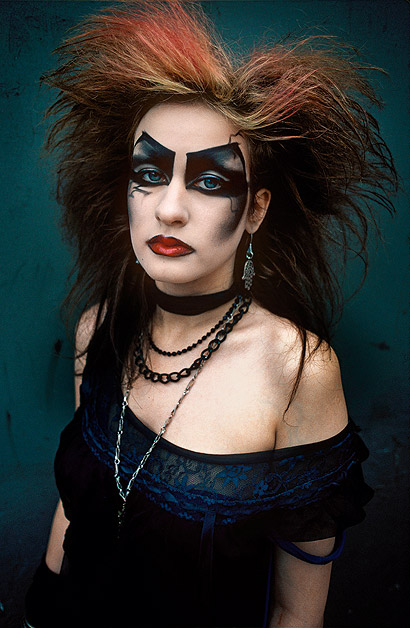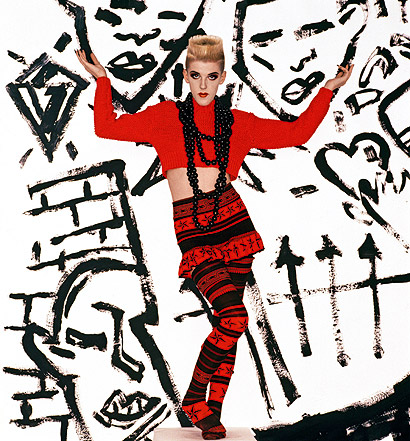|
Bodymap, A/W 1984, model: Scarlett Cannon (image: Monica Curtin) |
||
|
It’s striking how few of the London fashion scene’s enfants terribles are still household names today, says Fatema Ahmed My most embarrassing memory of being a child in the 1980s involves being in a roomful of adults, my parents’ friends, and being asked who I would vote for in the next election. Although it seemed better not to answer at all, I made a tentative offer: “Mrs Thatcher?” After my audience had recovered itself, I was asked why. I knew there had been an issue with a leader of the Labour Party and his choice of winter coat – and by now I was cross at being laughed at – so I replied, more firmly this time: “Because she dresses nicely.” I’m regularly reminded of this answer, so it was rather encouraging to see the following words – of Margaret Thatcher – at the start of the V&A’s summer exhibition: “Fashion is important because it raises the quality of life when people take the trouble to dress well, and it provides employment for many, many people.” The show begins by examining the London fashion scene’s roots in club culture; it leaves you with a sense that its most interesting talents, such as John Galliano, have been swallowed up and spat out by a bigger system; or, like Wendy Dagworthy (a consultant to this show), found a safer berth teaching at Central Saint Martins and then at the RCA. Between these extremes there are reminders of many figures whose business models faltered, and who faded away during the recession that ended the decade. The V&A has put on a crowd-pleasing show that still manages to tell you quite a lot about the British fashion industry. Mainly, that it’s all so recent. The first London fashion week took place only in 1984. Before then, individual designers had shops (and it would be a single shop) but didn’t show their work to peers and buyers on a bigger scale. The standout collection in 1984 was John Galliano’s graduation show Les Incroyables, inspired by the French revolution and his study of the V&A’s costume collection. Ever since then, London has been where conglomerate-owned fashion houses go to scoop up new talent and introduce it to their stuffier ways. It’s not where they show, of course, and a recent hilariously high-handed piece in Le Monde likened LFW, even now, to “a school where the less academic pupils, and the ones that mess around, are the stars”. The club-culture stories seem rather familiar. There’s Billy’s, Club for Heroes and the Blitz Club and their immortalisation in The Face and i-D; more than one designer confesses their fear of being turned away from the Blitz by Steve Strange, a fear that spurred them on to greater feats of DIY-dressing … The ICA is currently celebrating the same scene in its subcultures show at the Old Selfridges Hotel, and there have been glossy books documenting its stars (Icon 117). A generation now in its fifties seems to be coming over all nostalgic. The exhibition has an eye for the ridiculous: “punk influenced jumpers were a familiar part of the alternative club scene,” we’re told – next to a fluffy fright by Ally Capellino. But among the well-worn stories and some easy hindsight, there are some lovely surprises. The most beautiful outfit is a 1986 teal, silk jersey dress by Georgina Godley (who later moved from fashion to home accessories), which has boned hoops at the neck, wrists and, most dramatically, at the hem. It’s topped off by Tatlin, a silk-velvet, wire and feather construction by the milliner Stephen Jones, which mimics the Monument to the Third International. The ensemble is a one-off; neither pure club nor catwalk, but an elegant, outlandish, synthesis of the two.
From Club to Catwalk at the V&A, by Derek Ridgers (image: Derek Ridgers)
Bodymap, A/W 1984, model: Scarlett Cannon (image: Monica Curtin) From Club to Catwalk: London Fashion in the 1980s, Victoria and Albert Museum, London, 10 July 2013 to 16 February 2014 |
Words Fatema Ahmed |
|
|
||






















